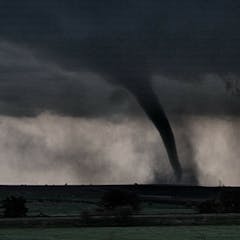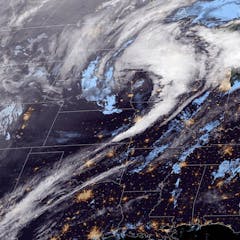
Articles on Forecasting
Displaying 1 - 20 of 32 articles

We crave certainty in our weather forecasts. But that’s only possible for big weather events such as cyclones and major storms. Everything else is probability.

An atmospheric scientist explains how El Niño works, this year’s oddities and why this phenomenon doesn’t last long.

What are the odds of the end of humanity? There’s no real way to know.

Local communities need to be warned more clearly and effectively if there is a threat of a storm surge and of coastal flooding.

Air quality forecasting is getting better, thanks in part to AI. That’s good, given the health impact of air pollution. An environmental engineer explains how systems warn of incoming smog or smoke.

Three economists looked at years of temperature and death data and calculated the costs when forecasts miss the mark.

In the future, our computer may be able to produce long-term forecasts in areas such as climate change, bushfires and financial markets – while being cheaper and more accessible than supercomputers.

Researchers are turning to computer models, drones and other methods to improve tornado forecasting.

A sobering picture emerges from a study testing social scientists’ ability to predict societal change during the COVID-19 pandemic.

Sea-level rise isn’t the only climate-related problem for our coasts – extreme waves that cause flooding and erosion are also changing, but exactly how is hard to predict.

Unprecedented droughts leave the subsurface drier than usual, affecting water supply in subsequent years.

The assumption that more detail is better is questioned by a new study.

Buying and selling stocks – with real or play money – is a way to harness the wisdom of the crowd about questions like who is going to win a competition.

Pollen brings seasonal misery to millions of Americans, but it serves a critical purpose: fertilizing many kinds of plants, including food crops.

Could South Africa’s flooding in 2022 have been foreseen? It has long been a challenge for scientists and engineers around the world.

Weather forecasting is complex and challenging. The process entails three steps: observation, analysis and communication.

Forecasters described it as a ‘historical weather day.’ An atmospheric scientist who was at the heart of the storms explains what happened.

Part of the 2021 Nobel Prize in Physics was awarded for work modeling Earth’s climate using its chaotic, complex weather. To scientists, chaos lies in the gray zone between randomness and predictability.

Some so-called superforecasters are claimed to have predicted the course of the pandemic better than scientific experts.

New Orleans has about a 40% chance of getting hit by a tropical storm in any given year. Here’s how heat, winds and the shape of the seafloor raise the hurricane damage risk.
